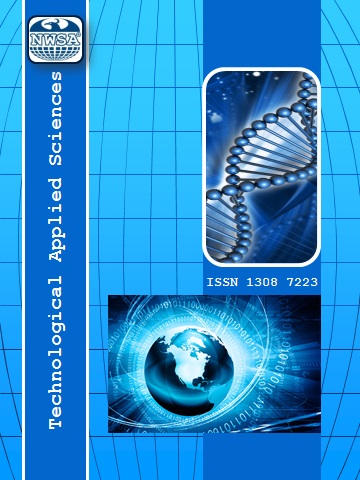References
[1] Jinlong, L.V., Tongxiang, L., Limin, D., and Chen, W., (2016). Influence of sensitization on microstructure and passive property of AISI 2205 duplex stainless steel. Corrosion Science, 104:144-151.
[2] Karahan, T., Emre, H.E., Tümer, M., and Kaçar, R., (2014). Strengthening of AISI 2205 duplex stainless steel by strain ageing. Materials & Design, 55:250-256.
[3] Wang, Y.Q., Yang, B., Han, J., Dong, F., and Wang, Y.L., (2012). Localized corrosion of thermally aged cast duplex stainless steel for primary coolant pipes of nuclear power plant. Procedia Engineering, 36:88-95.
[4] Herenu, S., Alvarez-Armas, I., and Armas, A.F., (2001). The influence of dynamic strain ageing on the low cycle fatigue of duplex stainless steel. Scripta Mater, 45:739-745.
[5] Kirik, I., (2016). Weldability of Ti6Al4V to AISI 2205 with a nickel interlayer using friction welding. Materials and Technology, 50(3):353356.
[6] Mercan, S. and Özdemir, N., (2017). Weldability characteristics of friction-welded AISI 2205 to AISI 1020 steels. Weld World, 61:667677.
[7] Çetkin, E., Imak, A., and Kirik, I., (2022). Investigation Microstructure and Mechanical Properties of Ramor and Stainless Steel Joined by Friction Welding. Journal of Materials Engineering and Performance, 1-12.
[8] Çetkin, E. and Imak, A., (2022). Sürtünme karıştırma nokta kaynağı ile farklı parametrelerde kaynak edilen AA5182/AA7075 alaşım çiftlerinin mekanik ve mikroyapılarının incelenmesi. International Journal of Pure and Applied Sciences, 8(2):405-414.
[9] Cetkin, E., (2020). Farklı kaynak parametrelerinde sürtünme kaynağı ile birleştirilmiş AISI304/AISI5140 çelik çiftlerinin mekanik ve mikroyapılarının araştırılması. Bitlis Eren Üniversitesi Fen Bilimleri Dergisi, 9(4):1724-1733.
[10] Chaudhari, A.N., Dixit, K., Bhatia, G.S., Singh, B., Singhal, P., and Saxena, K.K., (2019). Welding behaviour of duplex stainless steel AISI 2205: A review. Materials Today: Proceedings, 18(7):2731-2737.
[11] Mercan, S., Aydin, S., and Özdemir, N., (2015). Effect of welding parameters on the fatigue properties of dissimilar AISI 2205AISI 1020 joined by friction welding. International Journal of Fatigue, 81:78-90.
[12] Sarsilmaz, F., Kirik, I., and Batı, S., (2017). Microstructure and mechanical properties of armor 500/AISI2205 steel joint by friction welding. Journal of Manufacturing Processes, 28(1):131-136.
[13] Batı, S., Kılıç, M., and Kırık, I., (2016). Friction welding of dissimilar AISI 304 and AISI 8640 steels. European Journal of Technic, 6(2):79-86.
[14] Satyanarayana, V.V., Madhusudhan Reddy, G., and Mohandas, T., (2005). Dissimilar metal friction welding of austeniticferritic stainless steels. Journal of Materials Processing Technology, 160:128137.
[15] Özdemir, N., (2005). Investigation of the mechanical properties of friction-welded joints between AISI 304L and AISI 4340 Steel as a function rotational speed. Materials Letters, 59(1920):2504-2509.
[16] Özdemir, N., Sarsılmaz, F., and Hasçalık, A., (2007). Effect of rotational speed on the interface properties of friction-welded AISI 304L to 4340 steel. Materials & Design, 28(1):301-307.
[17] Hasçalik, A., Ünal, E., and Özdemir, N., (2006). Fatigue behaviour of AISI 304 steel to AISI 4340 steel welded by friction welding. Journal of Materials Science, 41:32333239.
[18] Ünal, E., Karaca, F., and Sarsılmaz, F., (2019). Investigation of interface microstructure properties of AISI 316l/AISI 4140 steel couple welded by friction welding process. Journal of the Faculty of Engineering and Architecture of Gazi University, 34(2):701-708.
[19] Kırık, I. and Ozdemir, N., (2013). Weldability and joining characteristics of AISI 420/AISI 1020 steels using friction welding. International Journal of Materials Research, 104(8):769-775.
[20] Kırık, I., Özdemir, N., and Çalıgülü, U., (2013). Effect of particle size and volume fraction of the reinforcement on the microstructure and mechanical properties of friction welded MMC to AA061 aluminum alloy. Kovove Materials, 51:221-227.
 +90(533) 652 66 86
+90(533) 652 66 86 nwsa.akademi@hotmail.com
nwsa.akademi@hotmail.com Fırat Akademi Samsun-Türkiye
Fırat Akademi Samsun-Türkiye
